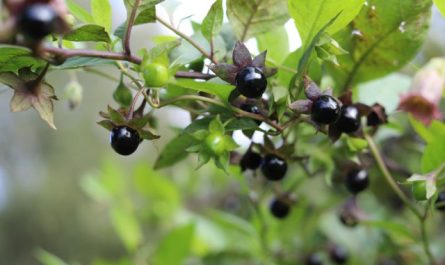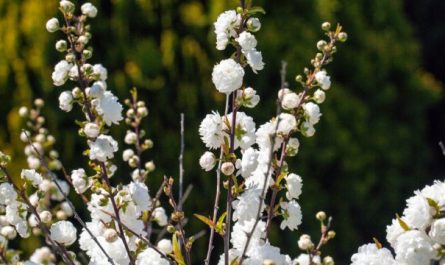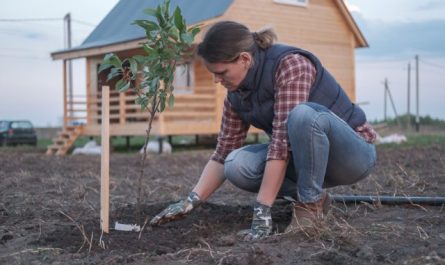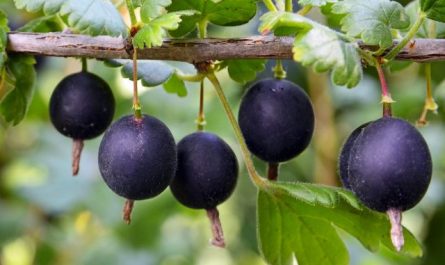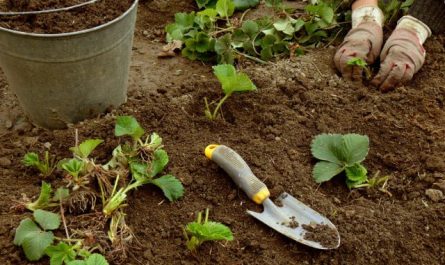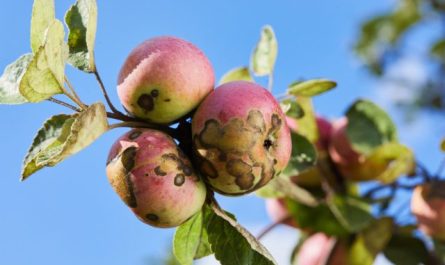Potatoes for everyone who grows them on their own have always occupied and will always occupy a leading place in the calendar of agricultural work. Both planting and digging potatoes have turned into a kind of ritual and holiday for many gardeners. But with the end of one potato cycle, the next one begins. And after the long-awaited harvest has been collected and the results of the season have been calculated, one should not forget about preparing for the next year. And first of all, about the soil, which potatoes deplete more than other root crops. In order not to lose soil fertility and get a good harvest of completely different crops next year, it is better not to postpone soil care.

Correct crop rotation
Many people grow potatoes in the same area for many years in a row, but ideally the soil should rest from it for 2-3 years. In extreme cases, potatoes are not planted in one place more than 3 times in a row, restoring the soil after digging with the help of green manure.
Soil care after potatoes can be different:
- Traditional – with chemical fertilizers and digging.
- Organic – with sowing of green manure.
After potatoes in the current season, it will not be possible to sow even greens or early-ripening vegetables, and you can only select a “replacement” for the next year. Only nightshades are prohibited. Favorite peppers, eggplants, tomatoes should not end up in a bed where potatoes grew last year.
All legumes, including peas, and all cereals alternate very well with potatoes. But zucchini, pumpkin, radish, horseradish, turnip, rutabaga, cucumbers, cabbage (especially leafy), beetroot, garlic, onions, favorite early-ripening vegetables and greens for the table – radish, spinach, parsley and all types of lettuce (especially spicy ones – watercress, arugula and leaf mustard) are no worse for sowing after potatoes. If this choice is not enough, think about sowing celery or parsnips.

When to cultivate the soil after potatoes?
Working with the soil immediately after digging up potatoes is one of the main secrets of maintaining soil fertility. Even a few days of downtime, not to mention months, can significantly affect the condition of the soil. And the sooner measures are taken, the better.
A few months before winter, the quality of the soil can be improved dramatically, resulting in an excellent site for sowing next year.
Of course, in emergency situations, you can treat the soil before winter and at the beginning of spring (before planting the next crops), but the effectiveness of such measures will be lower.
The first step is to completely clear the beds.
After digging up potatoes, there is usually a lot of trash left in the garden bed. Before thinking about a strategy for improving the soil, you need to tidy it up. All the rhizomes of weeds and the remains of potato tops should be removed from the soil. The area cleared of trash after potatoes must be leveled.
If the plantings were seriously infested with wireworms, nematodes, or any fungal diseases were common on the potatoes, treatment against pests and fungal spores should be carried out on all the soil immediately after harvesting.

Green manure is the main assistant after digging up potatoes
Sowing green manure after potatoes allows not only to restore the soil, but also to take care of its health for many years. After all, by restoring fertility according to the laws of organic farming, industrial plants also play an important role in the fight against toxins, pathogens and weeds.
Green manures alone cope with the three main tasks of soil cultivation after digging up potatoes:
- disinfect, eliminate the risk of spreading pests and diseases of potatoes and nightshades, prevent infection of other plants;
- increase the level of nutrients in the soil;
- restore the mechanical structure and texture of the soil.
And don’t forget about the additional “bonuses”:
- restoration of a healthy bioenvironment and ecological balance;
- improving air and water permeability of the soil;
- reduction of digging procedures and reduction of efforts required for soil processing;
- reducing costs, saving money on organic and mineral fertilizers and special preparations.
Selection of green manure
After potatoes, any green manure is suitable for restoring soil fertility. But since potatoes, due to their large vegetative mass and specific growth, deplete the soil in a special way, and the use of pest and disease control agents is carried out for them more often, it is better to use green manure from the legume and cruciferous group.
First of all, it is worth paying attention to typical “potato” green manures – mustard, alfalfa, clover, lupine, phacelia, peas, vetch. They are the ones that most quickly restore the phosphorus and nitrogen content in the soil and eliminate the negative consequences of growing nightshades.
Cereals are preferred in case of wireworm and other soil pest infestation, as well as loss of looseness or signs of pH imbalance in the area. The best results after potatoes among cereals are shown by oats and rye crops.
The seeding density for soil care after potatoes is very important. The seed rate is calculated so that about 10 g of green manure seeds are used for every 200 square meters of the plot. In this case, there will be no situation with too few plants or overloading the area with green mass, which cannot decompose effectively.

Autumn sowing of green manure is easier than spring sowing
In autumn, full row sowing is not necessary. After harvesting potatoes, it is enough to evenly scatter the green manure over the cleared area. The seeds are lightly sprinkled with soil on top (or covered with a rake) and covered with any covering material – non-woven materials, film, a layer of organic fertilizers, in particular compost. After watering, they will sprout quite quickly and begin to build up vegetative mass.
The following procedures on the site after potatoes are carried out after 30-40 days. When the plants reach a height of 15 cm (necessarily before the beginning of flowering of the plants):
- Plants that have grown sufficient vegetative mass are mown down.
- The green mass is dug into the soil, trying not to loosen the soil too deeply, to a depth of several centimeters (a rake, digging with a pitchfork, or a shovel will do).
- Additionally, microbiological preparations and mature organic fertilizers (compost, humus or manure) are added to increase the effectiveness of these procedures.
If it is not possible to sow green manure immediately after harvesting potatoes or the weather forecast does not allow you to get green mass in time, before the frosts arrive, sowing can be postponed and carried out before winter. In this case, it is better to mulch the area with compost before sowing, and then carry out standard winter sowing of green manure at the end of autumn.
Appearing immediately after the snow melts, the tender greenery quickly builds up vegetative mass and is dug into the soil before planting or sowing the crops that you have identified.
Alternative Strategies for Soil Care After Potatoes
On depleted soil, with classical agricultural technology, double application of mineral fertilizers is permissible – after harvesting potatoes and in the spring, before new plantings.
In addition to using special fertilizers and complex preparations to restore soil fertility (which are added during deep digging of the soil throughout the entire area), you can use the following methods of soil care after potatoes:
- The use of fungicides and herbicides (against dominant weeds and diseases that infected potatoes in a particular area) followed by deep digging of the soil and the application of mineral fertilizers (double the standard dose of phosphorus fertilizers and the standard dose of potassium fertilizers).
- Adding organic fertilizers (compost or humus, 1 bucket per square meter) before the usual deep soil cultivation.
- Skipping the season and “resting” the site.
- Use the bed during the next season to grow annuals and herbs with beneficial properties (mint, oregano, marigolds, calendula, etc.)
Dear readers! Depletion of soil by potatoes, as well as the loss of its structure, is a problem that needs to be considered even before planning the harvest. Potatoes’ increased needs for phosphorus and potassium mean that without special measures and soil care, it will be very difficult to restore the soil for subsequent crops.

